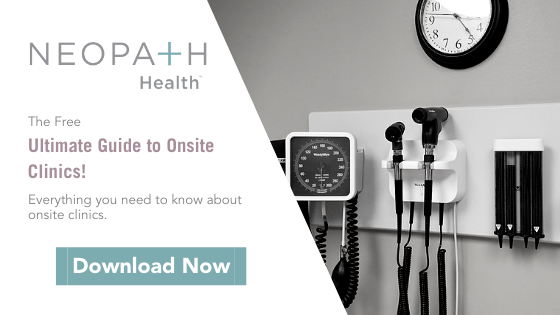If you think the health and well-being of your employees is their business, you may want to think again. Quite literally, their health is your business.

The Cost of Poor Employee Health

According to research conducted by the Centers for Disease Control and Prevention (CDC), work-related stress (i.e., poor work-life balance, irregular working hours, lack of control, etc.) is one of the most common health problems and occupational health risks facing your employees.
This might sound like the employees' problem, but the employers are the ones paying for it. In fact, the cost of insurance premiums and employee medical claims is steadily rising. Plus, when employees are out of work due to stress-related illness like anxiety, depression, obesity, substance abuse, and heart disease, productivity suffers. Losses from employee absences represent approximately $225 billion in revenue, according to the CDC -- that's hardly a figure you can afford to ignore!
If you think the health and well-being of your employees is their business, you may want to think again. Quite literally, their health is your business. #HR #Benefits [Click to Tweet!]
This is a huge problem with many factors at play. For example, some employees in poor health (both physical and mental) are present at work, but they simply aren't engaged in the work they do -- yet another variable affecting overall productivity. What's more, employees who aren't engaged in their jobs don't stick around and retention rates drop, which ultimately forces employers to shell out more money for recruiting, hiring and training.
It's clear that a major overhaul needs to happen to promote workplace health and minimize lost revenue.
How to Support Employee & Workplace Health

Rather than attempting to solve the problem on a case-by-case basis, experts recommend a change in environment. You heard that right -- if your employees' health is suffering, the workplace environment could be a primary contributor.
A 2015 survey performed by the RAND Corporation revealed that:
- Greater than half of Americans worked in unpleasant or potentially hazardous conditions.
- One in five reported hostile or threatening conditions, such as verbal abuse or sexual harassment.
- Two-thirds reported working under high-pressured, time-intensive deadlines, leaving them unable to do their jobs in the allotted time.
In addition to these startling figures, the RAND report also shows that many workers described their work as monotonous, lacking in opportunities for advancement, and failing to feel "meaningful." Plus, only a little over half of those surveyed reported having a supportive boss or having good social connections at work with colleagues.
Building Workplace Health
Instead of looking at the above evidence as overly negative, see it as informative. When you know what employees are complaining about, you can start at ground zero and make positive, effective changes.
Here are a few ideas to significantly promote workplace health for your employees:
- Implement a more positive workplace culture, replacing harsh management practices with collaborative methods.
- Allow employees greater control over their working conditions and hours, such as opportunities for remote work.
- Promote social connection by celebrating achievements together (e.g., milestone work anniversaries or birthdays), and participating in community outreach as a group (e.g., charity sporting events or cleanup projects).
- Offer health insurance and health promotion programs, such as smoking cessation.
- Support work-life balance with childcare programs, family-friendly events and employee gym access.
- Reduce layoffs to increase economic security.
When employees are able to work in an environment in which they feel heard, valued and appreciated, they are naturally more engaged and productive at work. Making a few changes to their workplace environment can have a dramatic impact on their overall health and wellness. Plus, it will certainly lead to positive gains for your company.
Additional Sources
https://www.cdc.gov/chronicdisease/resources/publications/aag/pdf/2015/aag-workplace-health.pdf
http://www.who.int/occupational_health/topics/workplace/en/index1.html
https://www.gsb.stanford.edu/insights/why-your-workplace-might-be-killing-you
https://hbr.org/2015/12/proof-that-positive-work-cultures-are-more-productive
https://www.wellsteps.com/blog/2018/01/03/employee-health-and-productivity/
.png?width=433&name=NeoPath_2019_logo_2color%20(1).png)




